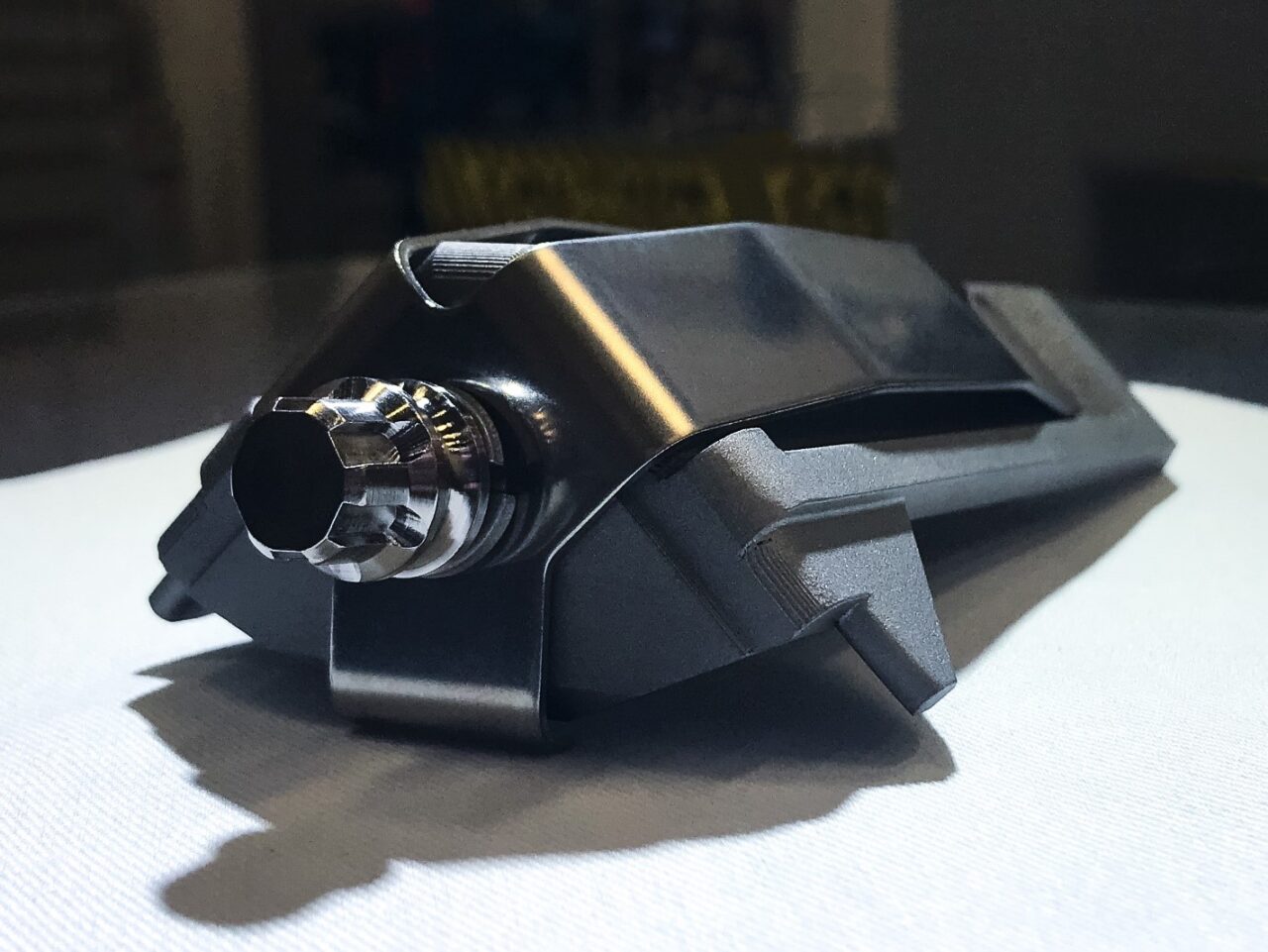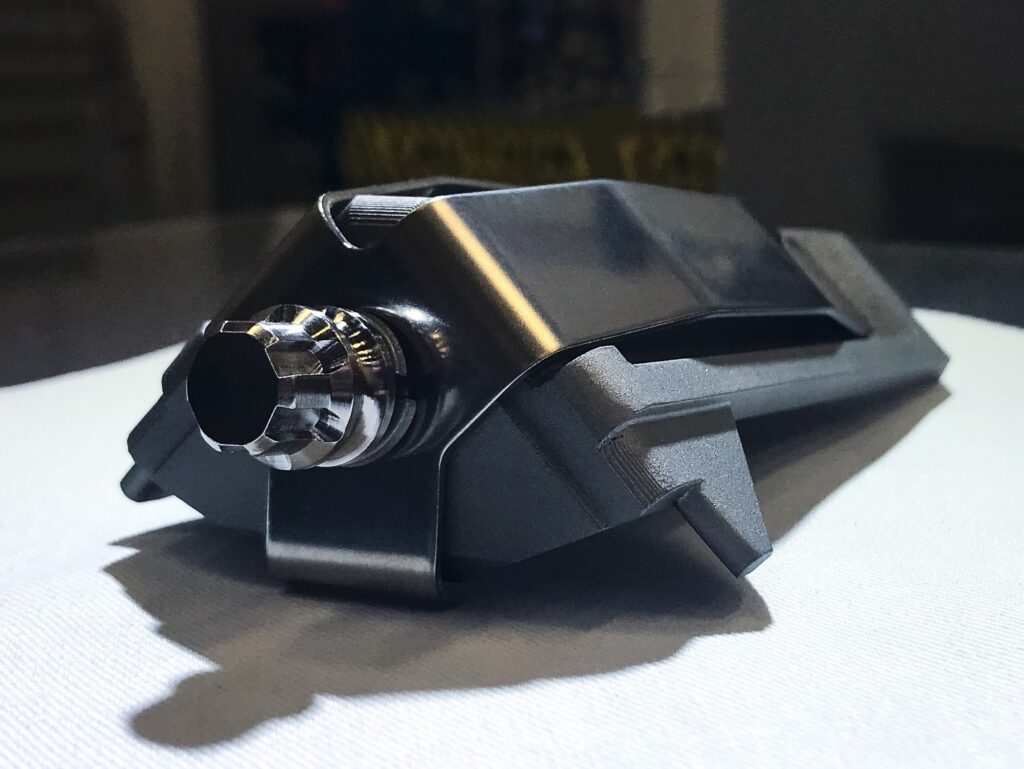Nuclear First: 3D-Printed Safety-Related Components Installed at Browns Ferry
The post Nuclear First: 3D-Printed Safety-Related Components Installed at Browns Ferry appeared first on POWER Magazine.

Marking a notable milestone for nuclear component additive manufacturing, four 3D-printed fuel assembly channel fasteners have been installed and are now operational at Tennessee Valley Authority's (TVA's) Browns Ferry Nuclear Plant Unit 2 in Athens, Alabama.
Channel fasteners are a type of bracket that attaches to the top of the nuclear fuel assembly to hold the channel that wraps around the assembly and guides coolant flow up through the bundle. They essentially secure the fuel channel to the reactor's boiling water reactor (BWR) fuel assembly. The safety components are conventionally fabricated from expensive castings and typically require precision machining.
 ORNL used novel additive manufacturing techniques to 3D print channel fasteners for Framatome's boiling water reactor nuclear fuel assembly. Four components, like the one shown here, were installed at the Tennessee Valley Authority's Browns Ferry Unit 2 in April. Credit: Framatome
ORNL used novel additive manufacturing techniques to 3D print channel fasteners for Framatome's boiling water reactor nuclear fuel assembly. Four components, like the one shown here, were installed at the Tennessee Valley Authority's Browns Ferry Unit 2 in April. Credit: Framatome
The four stainless-steel channel fasteners were 3D-printed last year at Oak Ridge National Laboratory (ORNL) under the Department of Energy-funded Transformational Challenge Reactor (TCR) program and installed on ATRIUM 10XM fuel assemblies at Framatome's nuclear fuel manufacturing facility in Richland, Washington. They were installed at Browns Ferry 2 during its planned spring outage, which ended on April 22. The brackets will now remain in the reactor for six years with regular inspections during that period," ORNL said.
The Browns Ferry components used direct metal laser sintering (DMLS) with a powder bed fusion process, an additive manufacturing technique in which a laser is used to melt and fuse the material powder together. (See below for other techniques that are being explored for advanced nuclear component manufacturing.)
Deploying 3D-printed components in a reactor application is a great milestone," noted ORNL's Ben Betzler, TCR program director, on Aug. 9. It shows that it is possible to deliver qualified components in a highly regulated environment."
Refined Nuclear Component ManufacturingThe project is another key achievement for the TCR program, a flagship federal government research and development (R&D) effort to enable technologies for advanced nuclear reactors through additive manufacturing and artificial intelligence. Among the program's objectives are to lower costs, speed up deployment, and modernize manufacturing, materials, and computational sciences for nuclear energy.
Under another much-watched research project, work continues to demonstrate-by 2024-a TCR microreactor that will use a 3D-printed core, advanced materials, and integrated sensors and controls.
While the additively manufactured fuel assembly channel fasteners are the first-of-their-kind installed at an operating reactor, they are also the first physical parts that have digital twins," or exact virtual models, created using TCR's advanced monitoring and artificial intelligence techniques while being manufactured, according to ORNL.
ORNL has said it chose to demonstrate 3D-printing of channel fasteners first in part because they have a straightforward, though non-symmetric, geometry and is a relatively simple part-ideal for a first-of-a-kind demonstration of additive manufacturing, in which material is deposited in layers, following a computer-designed model, to form precise shapes without the need for later carving or machining."
Last year, the lab also noted that although additive manufacturing may turn out to be a more cost-effective way to manufacture the part-which is typically cast and machined-the project will crucially serve as a test case" for TCR's digital platform. A key priority at TCR is to target a method to quickly certify the quality of components that will go into nuclear reactors, said ORNL's Ryan Dehoff, section head for Secure and Digital Marketing.
The Foundation for Designing and Manufacturing a Variety of 3D-Printed Parts'Nuclear component and fuel manufacturer Framatome on Monday hailed the milestone as a new frontier for nuclear technology. This project provides the foundation for designing and manufacturing a variety of 3D-printed parts that will contribute to creating a clean energy future," said John Strumpell, manager of North America Fuel R&D at Framatome.
Framatome, which has been working to introduce additive manufacturing to nuclear fuel since 2015, has said its efforts are focused on stainless steel and nickel-based alloy fuel assembly components. During a December 2020 workshop hosted by the Nuclear Regulatory Commission (NRC), the French technology firm noted it gained experience, demonstrated competency, and accomplished the full scope of basic product development during the fuel assembly component implementation project.
The scope included design modification and control for the powder bed fusion DMLS advanced manufacturing technique-including product and material specifications, as well as inspection requirements. The project also established qualification and quality control criteria. Perhaps more crucially, it paved the way for licensing and commercial operation of a safety-related fuel assembly component in a reactor.
The Nuclear Regulatory Commission (NRC) told POWER on Tuesday that TVA was able to install the components at Browns Ferrywithout prior approval" using the 10 CFR 50.59 change process. Reliability of the component is assured via the vendor's quality assurance program," it said. Broadly, however, the regulatory body said it has been working with industry to identify those components that would require prior approval and to ensure that the important issues that could impact safety are fully understood and accounted for as part of any request for approval." The agency also noted it has issued an action plan to guide these preparations.
Looking ahead, Framatome is working to introduce other fuel assembly components using additive manufacturing technologies and materials, including lower debris filters and upper grids and filters.
For TVA, the giant federally owned corporation that has indicated nuclear energy will play an increasingly significant role when it phases out coal generation by 2035, the innovative manufacturing approach could pave the path for use across the existing nuclear fleet and also in advanced reactors and small modular reactors," said Dan Stout, TVA's director of Nuclear Technology Innovation. TVA is actively engaged in developing new nuclear technology for tomorrow," he noted on Monday.
The Promise of Advanced ManufacturingDuring the two-day NRC workshop that explored advanced manufacturing technologies for nuclear applications, several attendees noted that interest in advanced manufacturing has ramped up of late, owing to technical leaps that promise to modernize manufacturing of replacement components in existing reactors or streamline construction of small modular and advanced reactors.
But partly because the nuclear industry is so highly regulated, it has been slower than other power sub-sectors to take on manufacturing advancements that have boosted technology efficiency and capabilities, such as for gas turbines and wind turbines.
The nuclear industry, however, is cognizant of potential benefits. Nuclear plant operators point mainly to potential supply chain cost savings. Advanced manufacturing, for example, could provide a long-sought solution to procuring parts whose suppliers are no longer in business or take too long to deliver, or whose quality is questionable. Advanced manufacturing could also help correct issues related to existing component design-for example, material failures-or which fall outside of regulatory compliance.
At the workshop, notably, the NRC highlighted five primary" technologies that it is actively exploring with public participation. These include laser powder bed fusion; direct energy deposition; electron beam welding; powder metallurgy (focused on hot-isostatic pressing); and cold spray techniques.
Laser Powder Bed Fusion. Laser powder bed fusion, such as was used to make the Browns Ferry components, uses a laser to melt or fuse powder particles together within a bed of powder. According to the NRC, it is generally most advantageous for more complex geometries," and its applications potentially involve smaller components, fuel hardware, and small internals.
Direct Energy Deposition (DED). DED involves a nozzle mounted on a multi-axis arm that deposits melted material on a surface. It could be suited to larger components, owing to its faster production and greater build-chamber volumes, the NRC said.
Electron Beam Welding. Electron beam welding involves a fusion welding process using a beam of high-velocity electrons to join materials. It can produce single-pass welding without filler material, and could be suitable for welding medium and large components.
Powder Metallurgy/Hot-Isostatic Pressing. PM/HIP involves the densification of a metal powder in a mold using high temperatures and pressure. The Electric Power Research Institute (EPRI) and the DOE are exploring this technique, using electron beam welding to fabricate a NuScale reactor vessel.
Cold Spray. Finally, cold spray involves powder sprayed at supersonic velocities onto a metal surface to form a bond with the part. Its potential nuclear applications include mitigation or repair of stress-corrosion cracking in reactor applications or potential chlorideinduced stress corrosion cracking in spent fuel canisters, the NRC said.
The Vast Landscape of Nuclear Advanced ManufacturingAlthough the Browns Ferry milestone is significant for its delivery of a 3D-printed safety component in a commercial reactor, recent achievements by the nuclear industry worldwide illustrate the wide scope for advanced manufacturing applications in the nuclear sector.
Like Framatome, nuclear fuel technology firm Westinghouse has explored producing components with powder bed fusion, binder jetting, and DED. Last year, Westinghouse marked another notable first" when Exelon in the spring of 2020 installed a Westinghouse thimble plugging device at Byron 1. The device, which is typically used to hold nuclear fuel as it is lowered into the reactor core, is made with laser powder bed fusion. Along with its development of multiple complex designs" for fuel debris filtering, Westinghouse is involved in a three-year DOE-funded project to additively manufacture spacer grids for nuclear reactors.
 Westinghouse Electric Co. in May 2020 announced a 3D-printed thimble plugging device was successfully installed in Exelon's Byron Unit 1 nuclear plant during its spring refueling outage. It was a first-of-a-kind installation for the nuclear industry. Courtesy: Westinghouse
Westinghouse Electric Co. in May 2020 announced a 3D-printed thimble plugging device was successfully installed in Exelon's Byron Unit 1 nuclear plant during its spring refueling outage. It was a first-of-a-kind installation for the nuclear industry. Courtesy: Westinghouse
Exelon, notably, also says it has used cold spray on primary moisture separators to mitigate flow accelerated corrosion in a pressurized water reactor steam drum. It notes cold spray shows promise for in-plant repair applications."
Cold spray applications, meanwhile, have been used in a variety of accident-tolerant fuels technologies that are currently being tested at various nuclear reactors across the country.
EPRI, which is weighing three advanced manufacturing roadmaps (for Class 1 primary pressure boundary components, reactor internals, and other class components), also says big gains have already been demonstrated for advanced manufacturing technologies. It suggests demonstration pieces of light water reactor components using PM/HIP have already been produced.
Outside the U.S., ENGIE in 2019 installed its first additively manufactured valve body (a non-safety classified component) in a nuclear power plant. ENGIE is now working with the European Union's Sustainable Nuclear Energy Technology Platform-under its Nuclear Components Based on Additive Manufacturing (NUCOBAM) program-to establish a qualification methodology for additively manufactured components in a nuclear installation. NUCOBAM expects its efforts will benefit nuclear industry profitability and improve safety through optimized component design.
In the UK, Rolls Royce is also exploring moving to an additive-rather than a subtractive-process for nuclear quality vessel manufacturing. That company suggests its efforts could reduce vessel manufacturing cost and lead time, establish an alternative supply chain, improve material quality, and reduce in-service inspections.
-Sonal Patelis a POWER senior associate editor (@sonalcpatel,@POWERmagazine).
The post Nuclear First: 3D-Printed Safety-Related Components Installed at Browns Ferry appeared first on POWER Magazine.